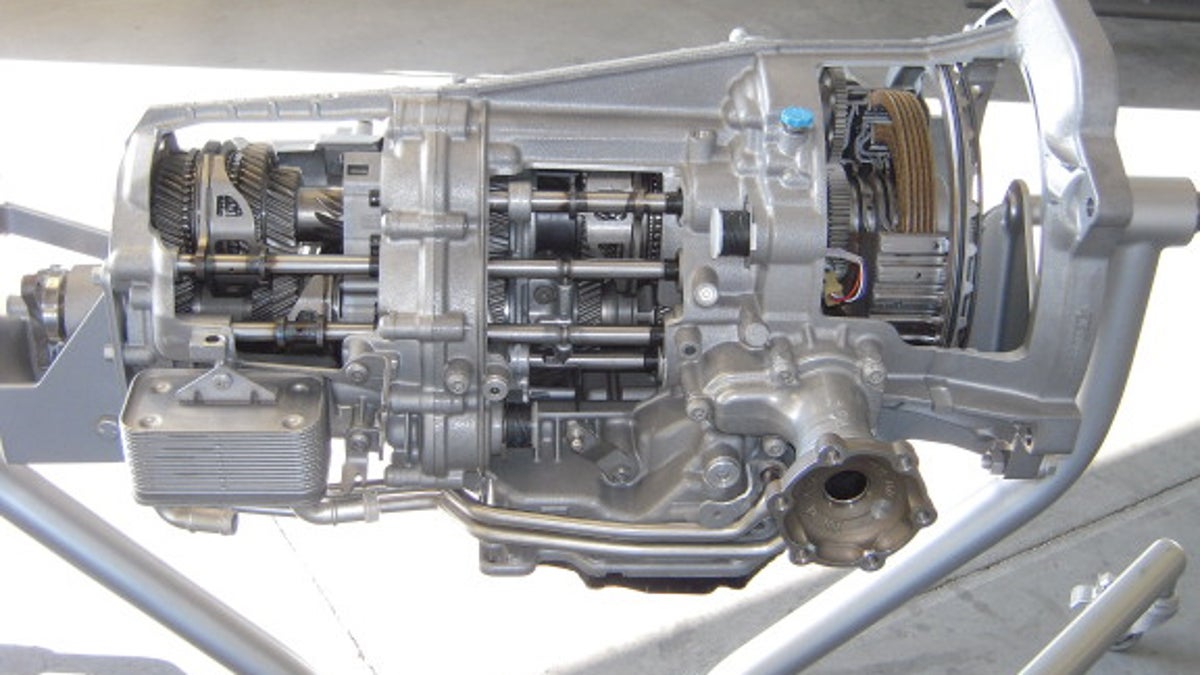Porsche's PDK
A quick look at the history and technology behind Porsche's new double-clutch gearbox.

It seems like every automaker with a claim to high performance and high technology has an automated-manual transmission today. Ferrari was the first, with the CambioCorsa, followed by BMW's SMG, and then Volkswagen Group's DSG. Mitsubishi has its TC-SST. What took Porsche so long to develop the PDK?
The real question is "what took everybody else so long?" The Porsche-Doppelkupplungsgetriebe name dates from 1983, when the first experimental version was developed and used in a 956 Series-produced endurance race car. A 956 with the experimental gearbox won a German national championship race, and a couple of years later a 962, the 956's descendant, equipped with the gearbox won an international championship race at Monza, in Italy.
So, why didn't the PDK appear in street Porsches by the late 1980s? Given the state of the electronic technology then, it would have been prohibitively expensive and likely none too civilized. The early automated-manual gearboxes that appeared in road cars a decade or more after that were none too civilized, either, and had the benefit of much more development in control technology.
Porsche is, in many ways, conservative, and is not given to jumping on the latest bandwagon. When the time was right, and the PDK was fully-developed and refined enough to operate as smoothly and gently as the torque converter-based Tiptronic it replaces in the 911, it was made public. No apologies necessary--in automatic mode, the PDK is difficult if not impossible to distinguish from a Tiptronic. In manual mode(s), it can shift much more quickly-- even faster than the standard manual gearbox.
How does it work? The PDK is essentially two gearboxes in one, each with its own clutch. They work alternately and sequentially, with the next gear in sequence engaged when the first is selected. Computer control prevents downshifts that would result in engine damage, and, if speed decreases quickly enough, gears can be skipped. Gears are the same standard type as found in a normal manual gearbox, not the planetary gears of a torque converter automatic. Further sensor input and computer control prevents shifting at inopportune times, such as during hard cornering. The motorcycle-type wet clutches and the gearsets have separate lubrication systems, as each needs a different type of lubricating oil.
How well does it work? Very. In automatic mode, it not only is imperceptibly different from a conventional automatic in action, it learns the driver's needs well enough that manual mode is not necessarily better, even when driving with a more-than-moderate degree of enthusiasm. Manually, it shifts much more quickly than the standard six-speed stick, even in its most gentle mode. Unlike many current automated-manual cars, the shift paddles follow the convention of Porsche's previous Tiptronic automatic and don't emulate race-car applications, with separate up- and down-shift paddles. That may be a little confusing at first, but you is quickly adapted. The PDK offers the Porsche 911 owner the best of both worlds.